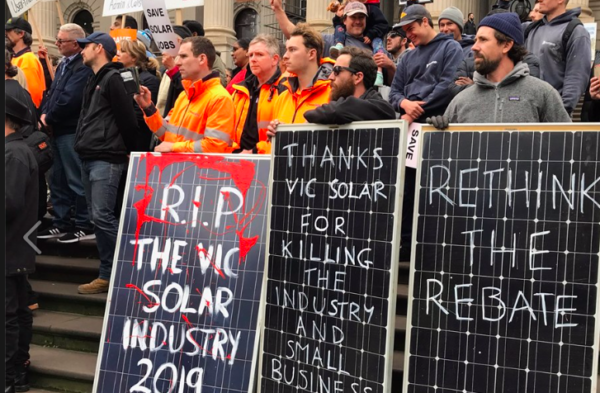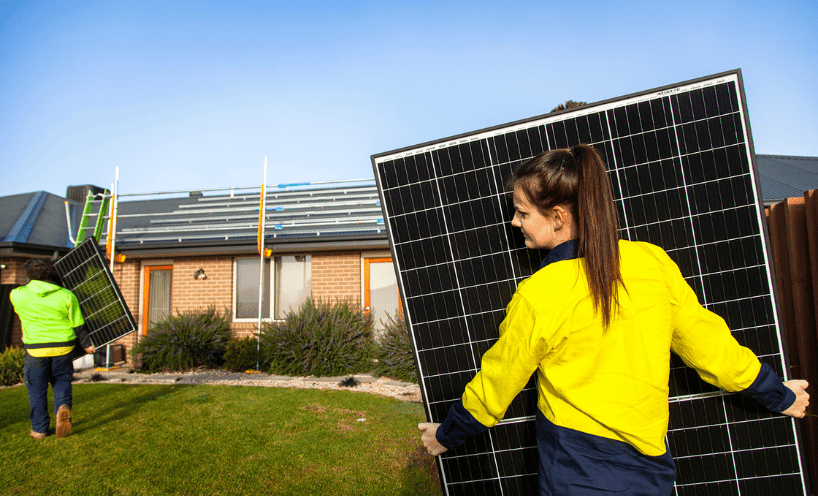The Victorian (VIC) government’s Solar Homes Program (program) had controversial beginnings, but then it seemed to right the ship and now the program is a bonafide success story. Indeed, so much so that Victoria now has more than 3 million panels and 1 GW of energy capacity from solar panels installed through the program.
From backfire to firing on all cylinders
When the Solar Homes program was originally introduced to an already flourishing Victorian solar industry making 3,500 installations a month, it immediately backfired. Though the VIC government had admirable intentions, but the program’s relatively small 3,333 monthly cap had two unintended effects.
Firstly, the small cap meant that people who were thinking about installing solar, but didn’t get the rebate, simply decided to bide their time. And secondly, since buyers became only interested in the small number of rebates on offer, the steady flow of installations that existed before the program turned into short periods of state-wide rush followed by long periods of troughs that put solar businesses under the pump.
The program’s unintended consequences saw two rallies from solar installers on the steps of Victoria’s Parliament and in front of the office of Premier Andrews. Industry group Solar Cutters expressed the sentiment at the time that although the solar industry supports the Andrews government’s “endeavour to increase the behind the meter renewable energy generation which will lower electricity costs and reduce the state’s carbon emissions,” the way in which the scheme has been rolled out has unintentionally blown out the tyres of the state’s solar industry. Or, as one Smart Energy Council (SEC) member put it, it is as if the “government has their foot on the accelerator and the brake at the same time.”

Image: Facebook/Smart Energy Council
The Andrews government briefly suspended the program as a result of protests, before restarting with a revised system on July 1 2019. The restart went far more smoothly and the government has consistently strengthened the program offering ever since. One example was when applications for rebates on batteries weren’t meeting the number of subsidies on offer, so the government increased the number of postcodes eligible for the rebate.
In January 2021 the tally for household solar installations in Victoria passed 510,000, a figure in part the result of the reconstituted Solar Homes program, and supported by 15,000 battery installations.
And now, nearing the end of 2021, the $1.3 billion Solar Homes program claims to have passed the 1 GW mark through the installation of three million panels on more than 165,000 Victorian homes, and is making a significant contribution to the state’s ambitions to half emissions by 2030.
The Victorian Government’s landmark Solar Homes program is one of my proudest achievements as Minister. We are putting renewable energy into the hands — and on to the roofs — of hundreds of thousands of households right across Victoria.
— Lily D'Ambrosio MP (@LilyDAmbrosioMP) June 22, 2021
Minister for Solar Homes Lily D’Ambrosio also claimed the program has created 5,000 jobs and increased levels of household solar in some suburbs by more than 70%. In Melbourne, the program’s top five suburbs are Tarneit, Cragieburn, Clyde North, Point Cook and Truganina. While in regional areas it is Mildura, Shepparton, Wodonga, Wangaratta and Wallan that are shining brightest.
“The impact of this program is clear,” said D’Ambrosio, “with Victorians continuing to embrace the opportunity to be part of the energy revolution.”
Overall, it is claimed that the program is responsible for an increase of homes with solar from 14% to 22%, with 71% of respondents to a Customer survey saying they would not have installed solar if it weren’t for the program’s rebate.
What is more, survey data shows that Victorian customers are also leaning towards larger systems, with the average system size now just over 7 kW, up from 5.7 kW at the outset of the program.
“With summer just around the corner, now is a great time to join the more than 180,000 households and small businesses who have applied for $340 million in rebates since the Solar Homes Program began in 2018” continued D’Ambrosio. “People will save on energy bills but will also be playing a key role in Victoria’s transition to a clean energy economy.”
This content is protected by copyright and may not be reused. If you want to cooperate with us and would like to reuse some of our content, please contact: editors@pv-magazine.com.









By submitting this form you agree to pv magazine using your data for the purposes of publishing your comment.
Your personal data will only be disclosed or otherwise transmitted to third parties for the purposes of spam filtering or if this is necessary for technical maintenance of the website. Any other transfer to third parties will not take place unless this is justified on the basis of applicable data protection regulations or if pv magazine is legally obliged to do so.
You may revoke this consent at any time with effect for the future, in which case your personal data will be deleted immediately. Otherwise, your data will be deleted if pv magazine has processed your request or the purpose of data storage is fulfilled.
Further information on data privacy can be found in our Data Protection Policy.